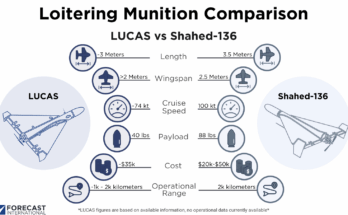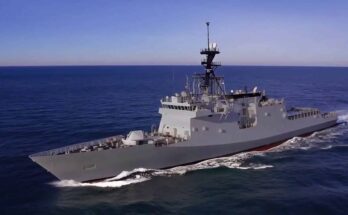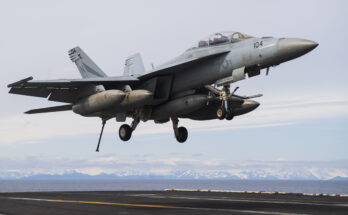
The U.S. Army recently announced a new self-propelled howitzer (SPH) competition, launching in mid-February. The Army plans to award Phase I contracts to an unspecified number of companies by September 2025. The selected vendors will then participate in additional evaluation testing through FY2026, with a goal of initial fielding by 2030. This competition is part of the Self-Propelled Howitzer Modernization (SPH-M) effort, and Army leaders are prioritizing an SPH capable of rapid loading, movement, emplacement, displacement, reloading, and refiring to meet combat needs.
Prior to the competition announcement, the Army spent months traveling abroad to procure a new SPH system. The Army’s request for information (RFI) in 2024 suggests that they are primarily interested in artillery systems that are currently in service or close to being fielded.
While no companies have been named, several are likely to compete for the Army’s new SPH contract. The Army has previously expressed interest in SPH’s from BAE Systems, Rheinmetall, Hanwha Defense, and Elbit Systems. BAE Systems, the current prime contractor for the M-109, will likely be involved. Rheinmetall, producer of the Panzerhaubitze 2000 (which has replaced M-109 systems in several European countries), participated in the Army’s 2024 roadshow and previously collaborated with BAE Systems to modify an M-109 with a 52-caliber cannon. Hanwha Defense and Elbit Systems were also involved in the roadshow, positioning them as likely candidates.
This competition is a way for the Army to fill the gap created by the last several failed SPH modernization attempts. The SPH-M will be the Army’s fourth attempt to develop a new self-propelled howitzer. The United States has utilized the M-109 SPH since its inception in the 1960s. While the M-109 has been upgraded several times, the Army has sought to replace it with a longer-range model since 1994. The first replacement project, the Crusader, ran from 1994 to its cancellation in 2002 by then-Secretary of Defense Donald Rumsfeld. In 2009, the Non-Line-of-Sight Cannon (NLOS-C) replacement program was also scrapped by then-Secretary of Defense Robert Gates in a restructuring. In 2024, the Extended Range Cannon Artillery (ERCA) modification program was discontinued after live-testing failure.
In the aftermath of the ERCA cancellation, the Army initiated a new conventional fires study to determine the way ahead for artillery modernization. The completed study determined that the Army should focus on autonomous artillery systems with greater range and mobility. The M-109 has a range of about 30km, while the ERCA project aimed to extend that range to 70km.
The announcement also comes on the heels of the People’s Liberation Army’s (PLA) public unveiling of the SH-16A. Equipped with fully automated turrets and a laser ignition system, the SH-16A represents a significant advancement in SPH technology, challenging the U.S. Army’s current capabilities. This innovation, coupled with European nations moving away from the aging M-109 and the continuing war in Ukraine, intensifies the pressure on the U.S. to rapidly field a modern SPH system. This new competition and the SPH-M effort may represent a crucial opportunity for the United States to finally bridge the gap after decades of searching.
Anna Miskelley has cultivated a deep interest in global security, emerging technologies, and military systems throughout her academic and professional career. She is currently a Defense Industry Analyst with Forecast International.
Before joining Forecast International, Anna was a research fellow at the Center for Security, Innovation, and New Technology, where she researched the impact of artificial intelligence on U.S. nuclear command and control systems. Proficient in Mandarin Chinese, Anna has published research on topics including strategic stability, internal Chinese politics, and artificial intelligence.




